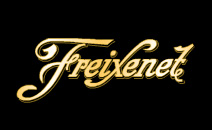At Freixenet, the bubbles of success have never gone to people’s heads. Although the company is the largest producer of sparkling wines in the world, and one of the most recognized Spanish brands around the globe, Freixenet knows that it can never let down its guard. This family- owned business, which was exporting wines to Spain’s colonies as early as 1830, has become a multinational company, thanks to its successful marketing strategy, the intensity of its sales efforts, and its success in combining family ties with professional management. Although it is active in some 150 countries, Freixenet is not satisfied, and it wants to increase its international presence. Universia-Knowledge at Wharton interviewed Freixenet’s president, Josep Lluis Bonet Ferrer, to discover the keys to its transformation, and learn about the challenges that are approaching.

Sign up to stay informed about our latest article releases.